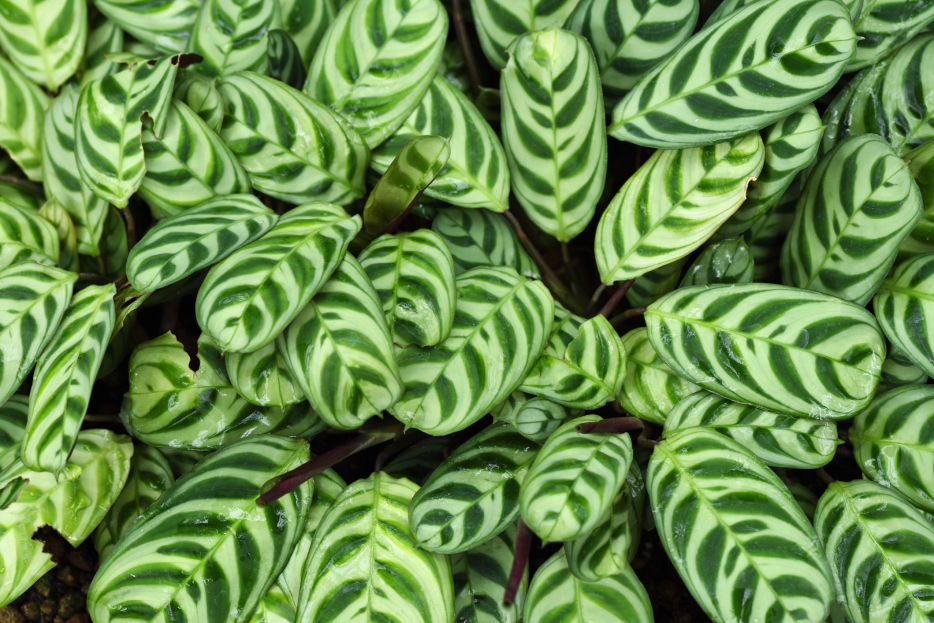
Calathea Burle Marx, more accurately known as Ctenanthe burle-marxii, is a dazzling houseplant named after the renowned Brazilian landscape architect Roberto Burle Marx. Known for its elongated, oval-shaped leaves with fishbone-like dark green patterns set against a silvery background, this plant brings a touch of the tropics and a whole lot of style to any indoor space.
Like other members of the Marantaceae family (commonly called "prayer plants"), Burle Marx displays nyctinasty—its leaves fold upward at night and reopen with the light of day, making it feel alive and interactive. Though it can be a bit finicky, the reward is a lush, patterned showpiece that brings texture and movement into your home.
Ctenanthe burle-marxii prefers bright, indirect light. A spot near a window with filtered light is ideal—too much direct sun will bleach the patterns on the leaves and potentially cause scorching.
In low light, the plant may survive but will grow more slowly and lose some vibrancy. Aim for medium to bright indirect light for best results.
This plant likes its soil to be consistently moist but never soggy. Water when the top 1 inch of soil feels dry, ensuring that excess water can drain freely. Use room-temperature, distilled, or filtered water when possible, as Ctenanthes are sensitive to fluoride and salts in tap water, which can cause browning tips.
In the winter, reduce watering frequency, but never allow the soil to completely dry out.
As a tropical plant, Burle Marx loves high humidity—aim for 50–60% or higher. Dry air can cause crispy leaf edges and brown tips. To maintain humidity:
Keep temperatures between 65–80°F (18–27°C) and protect it from cold drafts or sudden changes in temperature. Avoid exposure below 60°F (15°C).
Use a light, well-draining potting mix rich in organic matter. A mix of peat or coco coir, perlite, and a bit of orchid bark works well to keep the roots happy. Avoid heavy soils that retain too much moisture.
Make sure the pot has good drainage and repot every 1–2 years in the spring as the plant outgrows its container.
Feed every 4–6 weeks during the spring and summer growing season with a diluted, balanced liquid houseplant fertilizer. Too much fertilizer can cause salt buildup and leaf tip burn, so always follow the “less is more” rule.
Skip feeding in fall and winter when the plant’s growth naturally slows.
Remove yellowing or damaged leaves regularly to keep your plant looking its best. You can also prune any leggy growth to encourage a fuller appearance.
Wipe down leaves occasionally with a damp cloth to remove dust and let the leaf patterns shine.
Ctenanthe burle-marxii is best propagated by division during repotting. Gently separate the root ball into sections, ensuring each has healthy roots and shoots. Replant each division in fresh soil and water lightly.
Good news! Ctenanthe burle-marxii is considered non-toxic to pets, making it a safe and stylish choice for homes with curious cats or dogs.